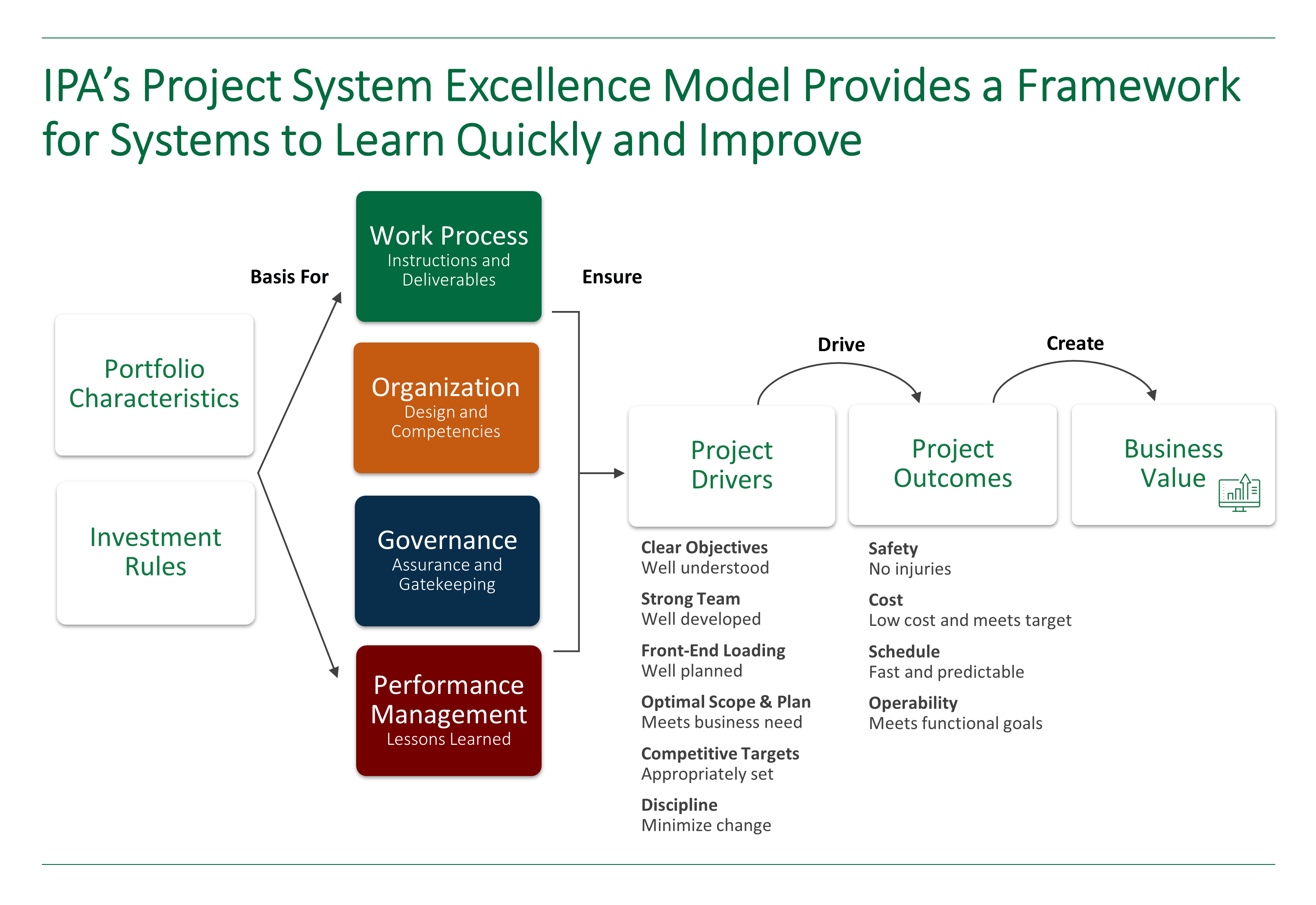Designing the Capital Delivery Framework for Wind Energy
The global drive to increase the use of renewable energy is providing unique opportunities —and unique challenges—for investors. This drive has led to significant investments in green power generation, including offshore wind. Because offshore wind provides one of the best and quickest ways to provide the grid with clean energy, there has been an influx of new developers, increasing competition in an already crowded market. The International Renewable Energy Agency forecasts average annual offshore wind energy investments to reach US$61 billion per year by 2030, meaning companies in renewable energy will have larger portfolios with larger projects as the source of the resource gets further from shore. The push to increase investment at this high pace is putting a strain on companies seeking to take advantage of these opportunities.
Independent Project Analysis (IPA) recently collaborated with an offshore wind company that is seeking to improve its project system to adapt to its rapidly growing portfolio of capital projects. This company is a major player in offshore wind and expects to execute a high number of projects in the coming years, with several to be done in parallel across different geographical locations. Their corporate focus over the coming years is to deliver this portfolio both with low cost and on time.
RELATED: Offshore Wind Industry Cost and Schedule Benchmarking Study
Through project evaluations and interviews with key stakeholders, IPA identified focus areas for improvement in project planning and execution. The need to deliver such a large portfolio is pushing the company to review key areas in its system, areas IPA believes will resonate across all companies in this industry. Questions that are being addressed include:
- Is the organization adequately set up for the new corporate objectives and rapid growth?
- What infrastructure and governance system gaps might hinder successful delivery of these opportunities?
- How can we drive standardization throughout the portfolio while allowing room for innovation?
- How can we maintain Best-in-Class project controls as the offshore wind markets tighten and the supply chain is stretched?
For projects to be executed well and have successful outcomes (i.e., to be predictable and competitive), owner companies need to have robust project organizations, teams, processes, and governance, as well as close involvement from the owner company throughout the project life cycle. For the last 34 years, IPA has been working closely with organizations to help them achieve capital projects excellence by bringing our expertise and research on what drives capital project success. We have expanded on this knowledge to help the offshore wind industry. As shown below, IPA’s Project System Excellence Model (PSEM) provides the right framework to allow systems to learn quickly and improve.

IPA is working closely with this company to help bring learnings from other industries to these unique issues to help structure mid- and long-term solutions to the challenges it is facing. Although wind energy projects have different risks, the practices that drive success are transferrable. IPA presented the findings to different levels and groups within the company to ensure the recommendations are communicated and to get buy-in to the suggested changes and improvements. The key to the successful relationship with the company is that the engagements have been collaborative, with IPA and the project teams working together.
The company is open and willing to learn from other industries and sees the value in IPA’s methodology and data-driven approach. All of IPA’s research and recommendations are derived from statistical analysis of real project data that IPA collects from face-to-face discussions with project teams. To date, the IPA database includes more than 21,000 projects with detailed information about project practices, costs, and schedules—more than 2,000 pieces of information per project. IPA’s work is continuously validated by clients who routinely compare IPA’s predictions with actual results and verify that IPA recommendations yield business value. Trust is the key element and it is achieved through a deep understanding of a company’s project system to provide actionable recommendations that are based on real project data and are provided within the context of the organization and any external limitations the company faces.
Improving project performance is not an easy task, especially when a company finds itself executing more complex projects without the structure to support them. Making changes to a project process takes time, but it is possible and will lead to long-term gains. A successful, capital-effective project system routinely delivers safe assets that operate well, are ready when the business needs them, are delivered at a cost that makes the business more competitive, meet the objectives of all internal and external stakeholders, and maximize resource use. IPA has identified all pieces that need to be in place in the early planning phases to achieve successful projects. It is exciting to be part of the fast growing renewable energy sector and IPA aims to become a long-term partner as it has done with companies in other industries.
Complete the form below to request more info about how IPA can optimize your organization’s capital delivery framework for offshore wind projects.